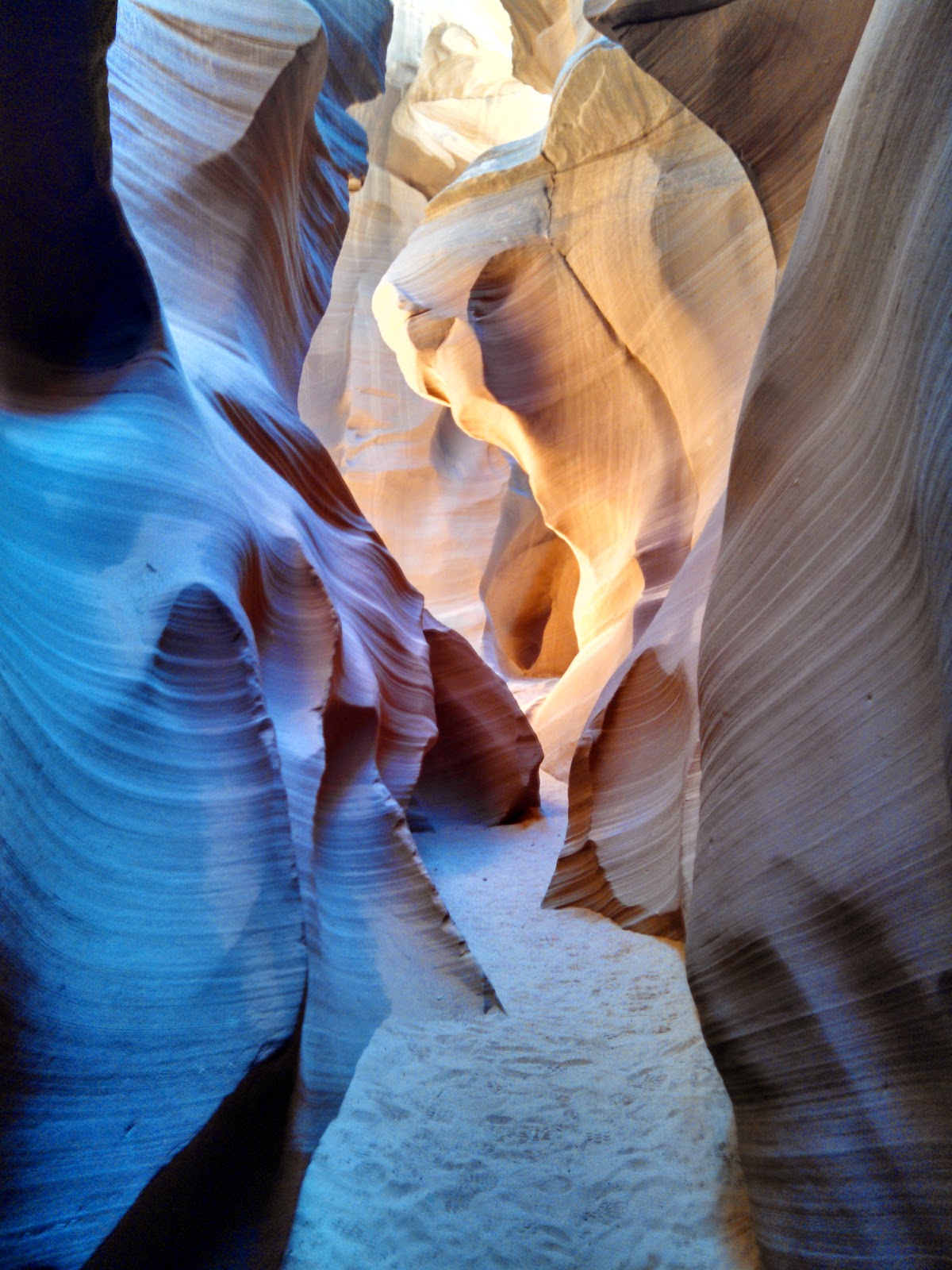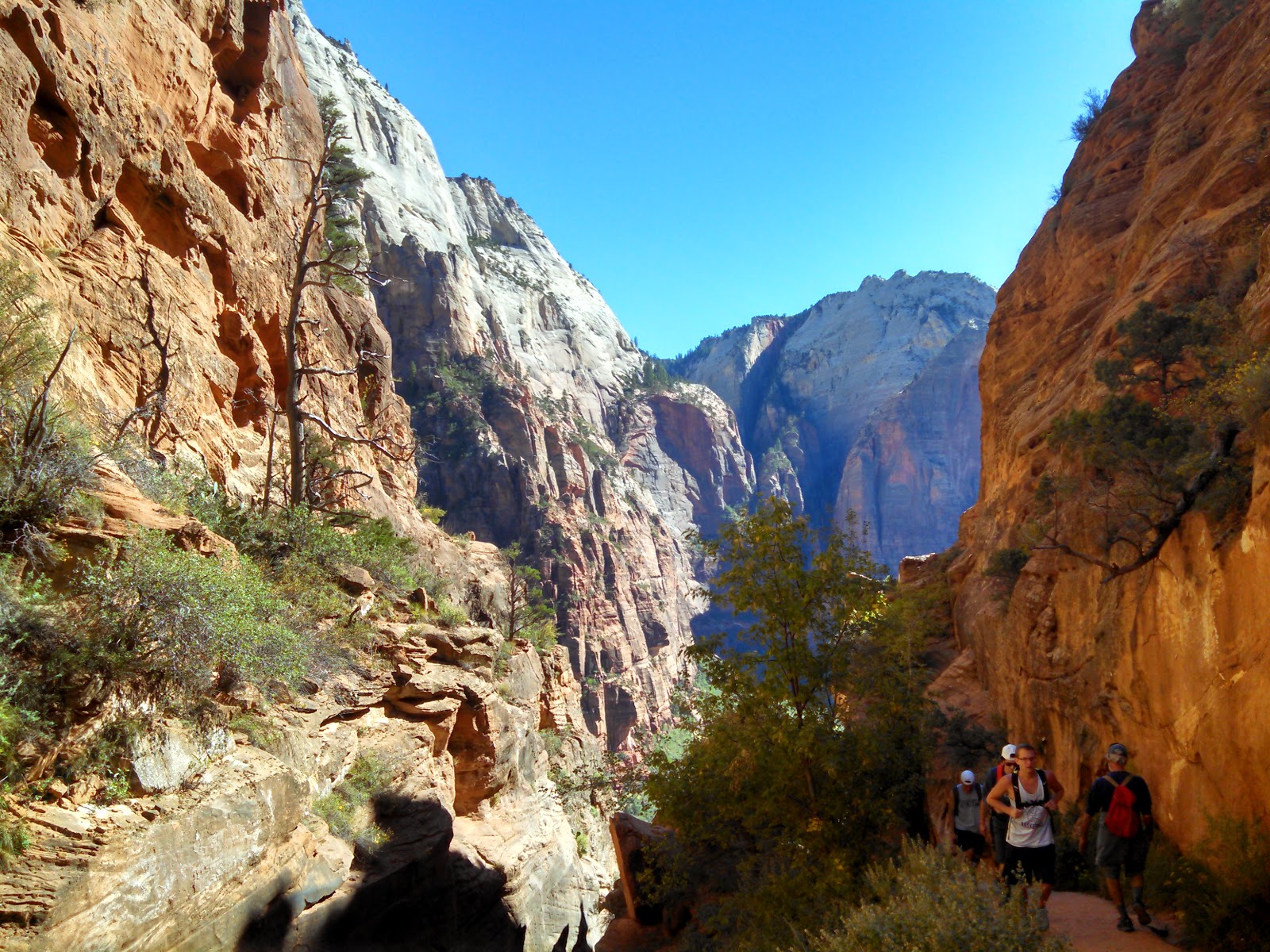This is a place that can be happily visited in a short amount of time. You can drive along the portion of the scenic road where cars are permitted, and just get out at the overlooks, and have a real sense of what it looks like. Even visiting for one day, and watching the play of light and shadow across the huge chasm as the sun moves across the sky is stunning. But having more time to get used to the sight of it, and begin to see it more deeply, is an enormous gift.
After a day or two, you can cease seeing just the hugeness of the hole in the ground, and begin to see the detail of the mesas and outcroppings, and of the incredible history of the earth told in the layers of rock. I don't believe there is another place on earth where the very story of the earth is laid bare in such an observable and beautiful display. If you want to just behold the story of our planet, this is your place.
And visiting it is easy. There is a wonderful system of shuttle buses that allows you to walk the rim, or hike into the canyon, or ride a bike, and then get taken back to where you started out or where you want to go next. The lack of cars makes the huge number of people there a little less daunting. And unlike many of the national parks, the services available at the Grand Canyon are impressive. Grand Canyon Village is a real town. Quite a small town, of course, but a town where people (those people who work at the park) live. So there is a grocery store, a bank, schools, a post office, many restaurants and lodges, a medical clinic, and so on. It was so different from other places we have been. It felt like a wonder to be at a place of such remoteness and beauty, but still be able to just run to the store when we ran out of something. And to buy the New York Times! It was heaven. Of course, we had no cell phone signal or ability to access the internet, and no electricity in the campground, and it was freezing cold at night. But the grocery store and the newspaper went a long ways to helping us feel "in the world," even while the experience of being there is mostly outside of the "regular" world.
We did a bit of hiking into the canyon, which was fabulous. When we visited here with our kids a long time ago, it was in the summer and blisteringly hot. The air gets warmer as you hike farther down, so we hadn't been able to hike below the rim. This time we were able to hike into the canyon to a level that felt terrific, without the difficulty hot weather brings. Hiking into the canyon is deceptively easy. It is a problem, in fact, that hiking down feels so easy, because hiking back up is twice as hard, and it is easy to fool yourself about what you have before you. But when you get even a mile into the canyon, the views and the relative intimacy are just amazing.
I have new respect for the people who hike down to the river. This can't be done, and then back again, in a day, but involves sleeping overnight at the bottom and returning the next day, or later, either back to the same place, or eventually up to the other side. Lots of people do this, of course, but having only done a small amount of hiking there, I am in awe of people who hike down the more than 5,000 feet to the bottom, with all the gear for camping on their backs. And then they must haul that gear, which I am sure weighs about forty pounds, UP another 5,000 feet (or 6,000 if going to the north rim) back again. The idea of a hike that involves a 10,000 or 11,000 foot elevation change, with a huge weight on your back, is just stunning to think about. In my one mile walk down into the canyon, I didn't quite make 1,000 feet of elevation change, and I didn't have anything on my back. Well, I'm old of course, but so are a lot of the people we saw, including people going all the way down. They have my admiration.
Th early hiking is pretty easy
The switchbacks help you get down pretty quickly. Feels deceptively easy!
Coming back up, the same paths don't look quite so easy. They are steep, and the sun is relentless.
Just walking the rim is a lovely experience. The views are astonishing, and every mile or even less, there is a place to get on the shuttle. And We had some lovely bike rides. You can put your bike on the front of the shuttle bus and bring it where you want to ride, or bring it back again. Riding along the rim, and stopping every now and again to gaze down at the canyon was great. And not having to ride all the way back was even better.
Biking along the rim
Just a view along the way
Sunrise and sunset are the main daily attractions at the Grand Canyon. We never saw the sunrise, since getting up early isn't part of our retirement behavior. But we made a point to be at the rim for the sunset at night. Each night we saw it from a different point on the rim, and it was always beautiful. Probably the best one was sitting outside the wonderful old El Tovar Lodge, which was built in 1905. There is a nice area there on the rim where a lot of people gather. It reminded me so much of Mallory Square in Key West. The setting is quite different, of course, but the gathering of people to watch it happen was the same. Here, though, there were people who looked for a place to sit down...and from wherever you are sitting it looks like they are stepping off the edge of the earth!
Can you see how it looks like they are just hanging off the rim? You can't see whatever they are stepping onto when they just seem to step out into space. We saw some people who wanted to settle down with their dog and watch the sunset. He took one look down and said, no way! They held him, and trusting soul that he is, he went along. But it looked scary enough, even to me.
The terrific thing about the sunset isn't the sun going down in the west, which is lovely, of course. It's the reflection of the sunset across the canyon, and on the rim in the east, and across the whole sky. Very romantic, very magical, and I would go so far as to say, unforgettable.
The last few rays before it gets dark, dark, DARK. And the night sky is glorious.
So it has happened: this part of our adventure is over. We will still be going from place to place, but the destination traveling, which was so centered on visiting the wonders of the national parks, is over. We will now spend a bit of time looking at places that might be suitable locations to wait out the Boston winter. Then, if all goes well, we will cross the country again, to go back home, in the Spring.
It has been great fun sharing our adventures, and describing the experiences we have had on the road. Thank you for coming with us.






























































